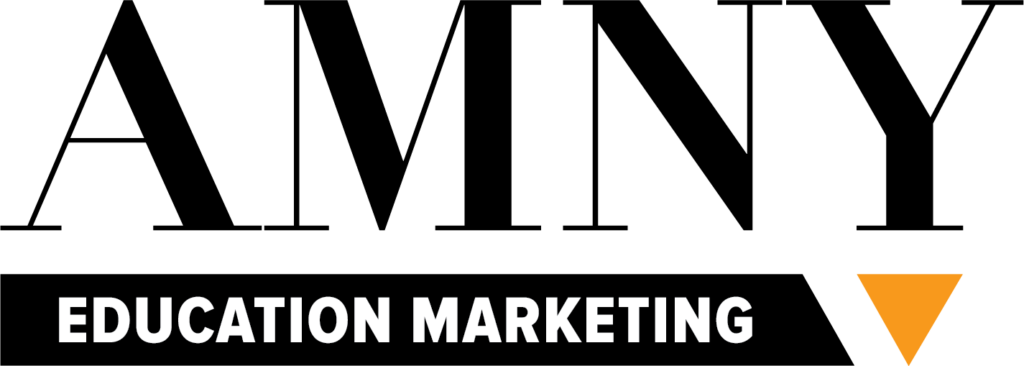
95% of Your Student Marketing Is Ending Up in the Trash
Colleges and universities often send high school students, who are preparing for higher education, print advertisements via the mail to rally their interest in their programs and other offerings. This type of marketing has been around since the 1970s, but its staying power is not a testament to its effectiveness. According to some research, of the 75.7 million pieces of mail sent to prospective college students, only 5% of them are ever opened. In other words, 95% of these marketing materials end up in the recycling bin.
This startling trend suggests that universities and colleges should reevaluate their marketing strategy to connect with more students. Discover why direct mail is an inadequate method for reaching these demographics and how to experience greater success with your student marketing from AMNY Education Marketing.
Why Schools Should Not Rely on Direct Mail
Once high school students complete the PSAT or PreACT for the first time, they may notice a higher volume of letters from colleges and universities in their mailboxes. Unfortunately for them, this correspondence does not reflect impressive test scores or other academic achievements. Conversely, this mail represents a relationship that began between the College Board and higher education institutions nationwide, dating as far back as the early 1970s.
From the student’s perspective, direct mail is neither personal nor beneficial in increasing their chances of getting accepted to the school. For the college or university, investing money in direct mail means spending twice as much on advertising materials that are likely to reach less than people than other types of marketing. Essentially, these letters do not produce much value for the student, which, in turn, renders them unproductive for your school.
How to Enhance Student Marketing
With direct mail lacking influence over student decisions on where to pursue higher education, universities and colleges should think about which platforms are best for connecting with students in an increasingly digital world. To ensure the resources you invest in marketing for your school are well spent, consider the following strategies:
Prioritize Social Media
While social media is popular with people of all ages, it is particularly relevant for younger generations. Pew Research Center found that approximately 84% of adults between the ages of 18 and 29 say they use social media at least some of the time. Websites like TikTok, Snapchat, and YouTube are ideal for higher education marketing because students — and tuition buyers — use them regularly, and they may provide insights into what they care about. Some ways your college or university can utilize social media include:
- Showcasing the campus: Post pictures and videos of academic buildings, dining halls, common areas, and libraries to allow prospective students to visualize themselves in the space. You may also use these platforms to provide updates on renovations.
- Highlighting students and faculty: Sharing about students or faculty members conducting groundbreaking research, participating in esteemed events, or traveling abroad shows students the countless opportunities on campus.
- Featuring alumni success stories: When students see alumni who went on to run thriving businesses or become leaders within an industry, it shows them the power of an education at your school.
- Displaying campus culture through short-form videos: TikTok is a phenomenon in the social media world. With this app, you can make quick videos that express campus life at your school. For example, have members of the marketing team create content at a big event, such as a sports game.
Customize Communication
Not all prospective students are recent high school graduates. Whichever type of student you want to reach, the marketing technique and language you use should reflect their situation and needs. Consider the following common groups that seek higher education and what matters most to them to craft more tailored advertising content:
- High school graduates: Usually the largest chunk of prospective students, this group is often aspiring to pursue some career path by attending college. They want to know your school will help them in their journey.
- Future academics: Also young adults, these students enroll in a university because they wish to become career academics. They may be more interested in research opportunities or programs that will prepare them for a master’s or doctoral degree.
- Career switchers: These students are typically working adults who may have attended college when they were younger, but seek additional education to enter a new professional path. They may also need further training to attain more advanced roles in their current industry.
- Open learners: These students may be fresh out of high school or older adults, but the common thread is they do not yet know what they plan to do with their degree. This group may need assurance your school offers many possibilities to explore.
Market Your School Effectively with AMNY Education Marketing
Colleges and universities looking for better methods of engaging with students than direct mail should turn to AMNY Education Marketing for assistance. We employ a strategy-first mindset, working to understand what makes your institution unique and creating custom content for your audiences. Our highly skilled team has numerous capabilities and will utilize them to tell a compelling story of your school, using the platforms where most prospective students connect. Contact us today to learn more about our marketing services for colleges and universities.
